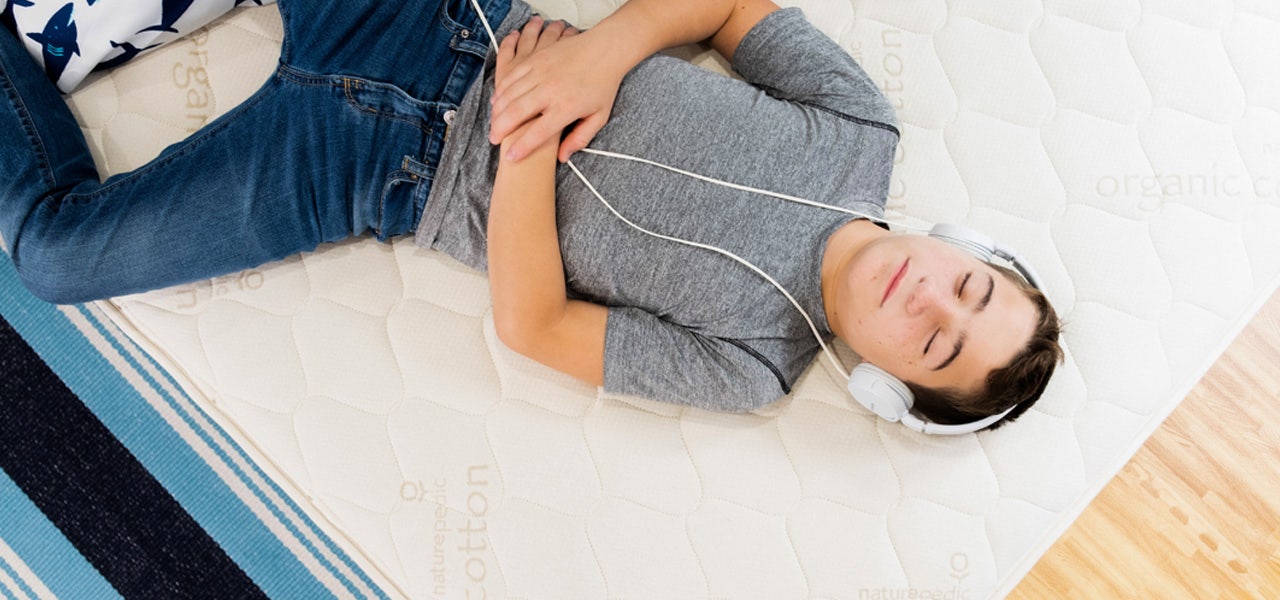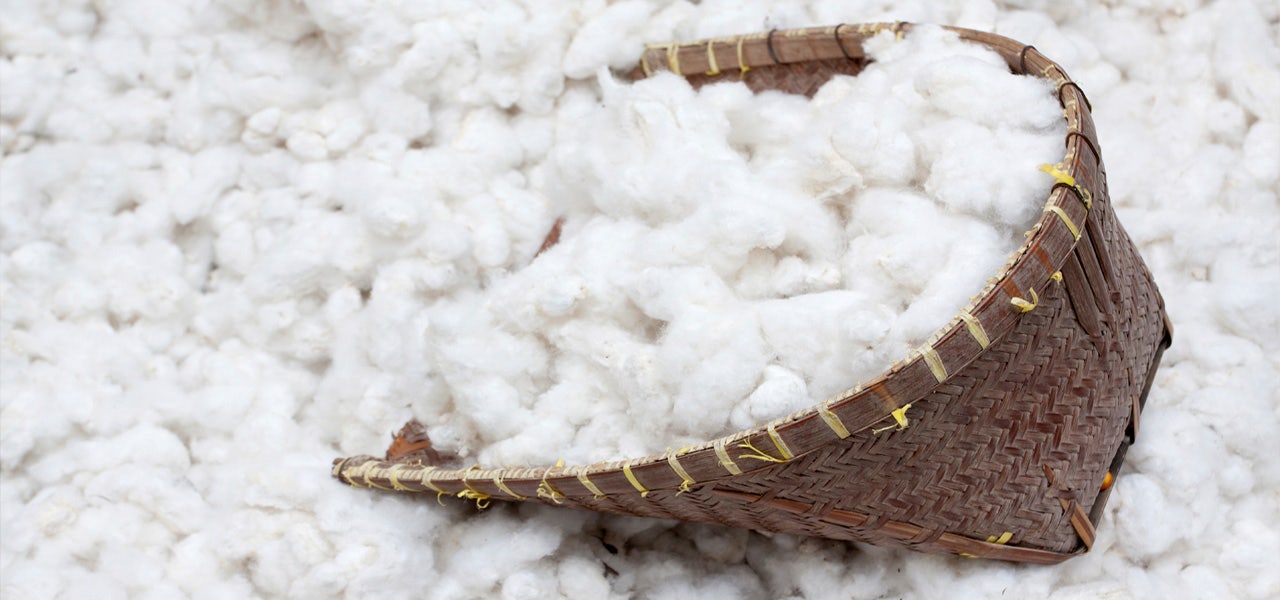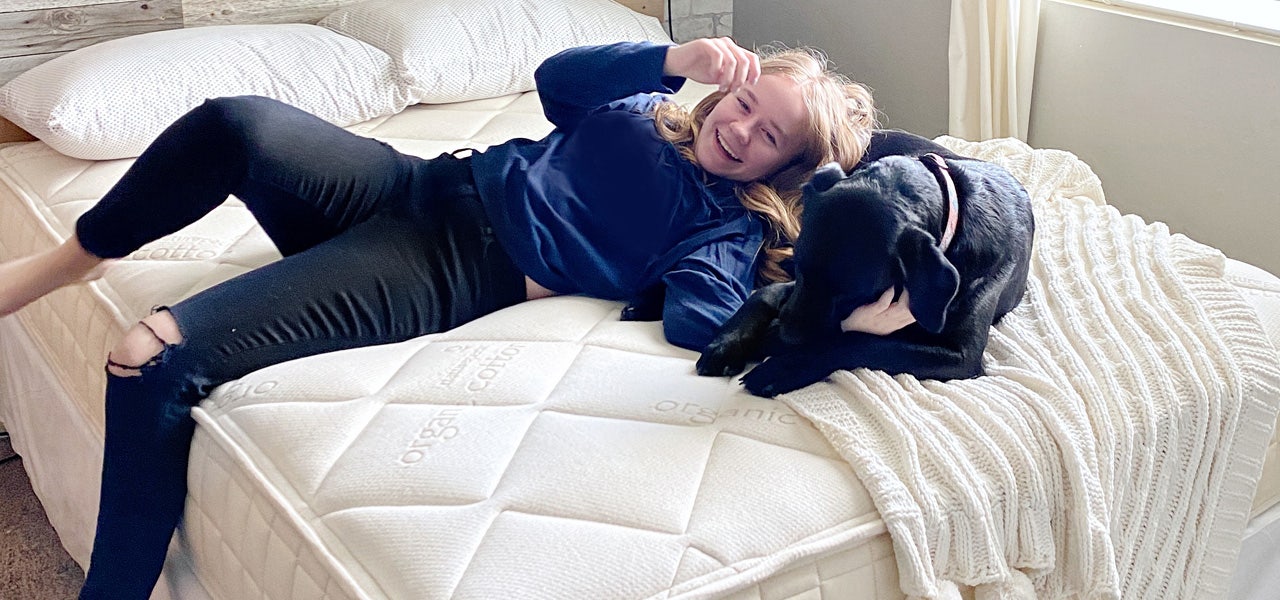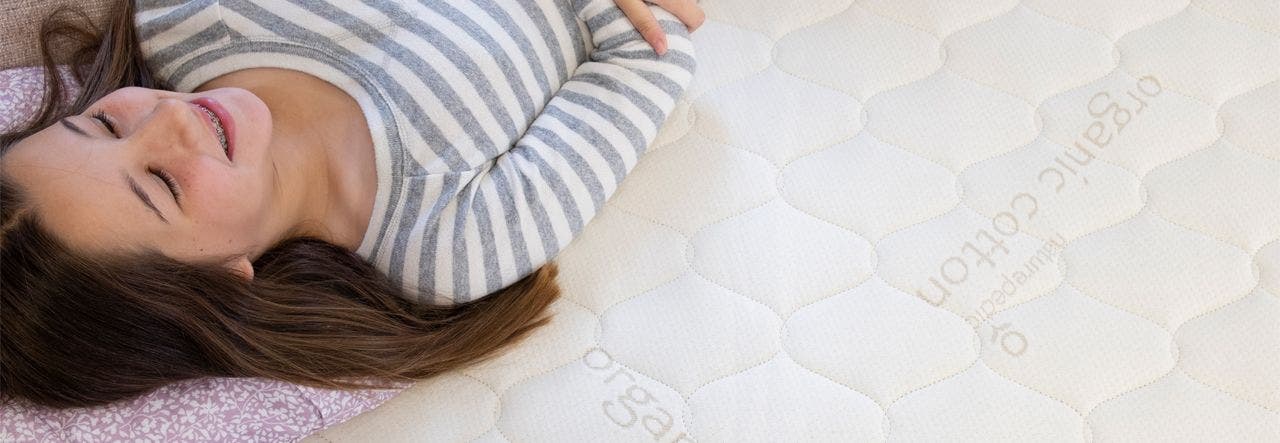Anybody miss high school? Yeah … we didn’t think so. Navigating adolescent body changes and the social politics of high school, while also making time for schoolwork, family and extra-curricular activities? Being a teenager is tough – on their body, on their emotions, on their sleep schedule.
Many teens are so preoccupied with their studies, hobbies and social life that they find it hard to get a good night’s sleep. And although it may not always seem like it, teens actually need more sleep than adults do. Aside from infancy, adolescence is the fastest stage of growth in humans, and for the body to grow, the body needs to rest.
Whether your teenager is heading off to college and into their first apartment, rapidly outgrowing their childhood mattress or just gearing up for another busy school year, right now is an excellent time to take a closer look at the mattress they're sleeping on.
At Naturepedic, we know the ins and outs of a good night’s sleep – at any stage of life! Here are our top things for you to consider when mattress shopping for your teen. But first, a little insight into teen sleep.
What are Teenagers’ Unique Sleep Needs?


The American Academy of Pediatrics (AAP) says that teenagers need 8–10 hours of sleep a night. Sleep has a significant impact on all three major areas of most teenagers’ lives:
- Physical and mental health
- Social and emotional development
- Academics
Sleep deprivation contributes to quite a few health risks for teens, including a weakened immune system, hormonal imbalances and mental health concerns. Complicating matters is that lightning-fast teen growth rate we mentioned. Everything you’ve heard about “growing pains” is true, and teenagers often experience muscle aches. This pain can worsen at night, which might negatively impact quality of sleep.
Everyone knows a bad night’s sleep can make you moody at any stage of life. For teens, who are adapting to more independence, responsibility and new social relationships, this makes quality sleep all the more important. Your teen is laying the emotional groundwork for the rest of their lives!
Then, of course, there are academics to consider. Ever fallen asleep in class? Sleep benefits more than just the ability to focus during first period Statistics 101. It nourishes the brain and promotes attention span, memory retention and critical thinking skills. Sleep also promotes creative thinking! Whether your teen is studying for an exam, practicing the piano or training at their first job, sleep is essential for success.
It's also worth noting that many teens are getting behind the wheel for the first time, and drowsy-driving is the cause of nearly 10% of traffic accidents. Missing just 1–2 hours of sleep can impair a driver – not unlike the way that alcohol consumption can.
The Basics: Teen Mattress Materials
So, what’s the best mattress for your teenager? To find the answer, let’s start with the basics: what’s it made of?


What Are the Healthiest Materials?
At Naturepedic, we believe that the best mattress materials are the ones that Mother Nature provides – and this is especially true for teens! This stage of vital growth and development is not a good time to introduce toxins and potentially harmful chemicals that come along with conventional teen mattress materials.
As far as materials go, you just can’t beat certified organic cotton and wool. These materials are naturally soft and breathable, which makes a certified organic teen mattress ideal for comfort and temperature regulation. And, more importantly, organic cotton and wool aren’t treated with harmful chemicals and flame retardants that could negatively affect your teen’s health.
Are Latex Mattresses OK for Teens?
Latex is a known allergen and so, while it can be a great option for adults who know they don’t have a latex allergy, Naturepedic does not recommend latex for any kids, including teens. If your child hasn’t been exposed to latex before, a mattress is not the best way to test that allergy.
What About Memory Foam?
Memory foam, as well as any other materials made from petroleum, is a material you want to avoid when shopping for your teen’s mattress. Period. Because memory foam is highly flammable, mattresses made with memory foam must be treated with potentially harmful flame-retardant chemicals in the manufacturing process.
Plus, petroleum-based mattress materials trap heat, which can leave your teen with a sweaty and restless night’s sleep – on a mattress that’s also off-gassing questionable chemicals into their room.
3 More Teen Mattress Considerations
Now that we’ve covered the basics, here are three more factors to consider when trying to find the best mattress for teens.


1. Mattress Firmness
Your teen’s unique stage of development might call for specific mattress firmness needs. The mattress should be firm enough to support proper bone and muscle development – their spine, shoulders, neck, hips and legs, in particular. But at the same time, it should also be soft and comfortable enough to ease growing pains. The sweet spot for teens is usually somewhere between extra firm and extra cushy. Individually encased coils are a great option when it comes to finding the right support. (By the way, you can learn a lot about mattress firmness for adults here!)
2. Mattress Size
Your teen is probably growing faster than you can keep track of. Keep an eye out for any major growth spurts, and make sure that they still fit in their bed. You might want to upgrade from a Twin to a Twin XL, Full or even Queen-sized bed for the teen years.
3. Temperature Regulation
Hormonal shifts can disrupt your teen’s ability to regulate their body temperature. Your teen’s mattress might feel comfortable. But, if it doesn’t help them to regulate their body temperature properly, they might end up tossing and turning all night anyway (and you’ll end up with a moody teen at the breakfast table). Naturally breathable materials like organic cotton are ideal for body-temp regulation.
Naturepedic's Top Picks for Teens
Supportive, comfortable and made from the good stuff, Naturepedic’s certified organic mattress options offer safer, healthier sleep for your teens. Explore our top picks below!
 BABY
BABY  KIDS
KIDS  ADULT
ADULT  LEARN
LEARN  STORES
STORES 